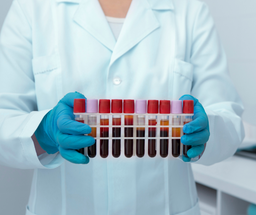Dec 26th 2023
The Cornerstone of Hematology: Why Wright-Giemsa Stain Matters
Hematology, the study of blood and its components, is a vital branch of medicine. Accurate diagnosis and appropriate treatment of blood-related disorders, such as anemia, leukemia, and lymphoma, depend on precise identification and analysis of blood cells. One of the most critical tools in the hematologist’s arsenal is the Wright-Giemsa stain. In this blog post, we’ll explore the importance of Wright-Giemsa stain in hematology, its historical significance, and how it has become an indispensable part of diagnosing blood-related disorders.
The History of Wright-Giemsa Stain
The Wright-Giemsa stain is a combination of two stains: the Wright stain, developed by American pathologist James Homer Wright in 1902, and the Giemsa stain, named after German bacteriologist Gustav Giemsa. These two stains were combined to create a powerful tool for visualizing blood cells under a microscope, enabling hematologists to identify and classify various blood cell types based on their distinct morphological characteristics.
The Importance of Wright-Giemsa Stain in Hematology
1. Identification and classification of blood cells
The Wright-Giemsa stain plays an essential role in the identification and classification of different types of blood cells. The stain differentially colors blood cells, allowing hematologists to differentiate between erythrocytes (red blood cells), leukocytes (white blood cells), and thrombocytes (platelets). The distinct colors and patterns produced by the Wright-Giemsa stain help hematologists to identify and classify various cell types and their stages of development.
2. Diagnosis of hematologic disorders
The ability to identify and classify blood cells is crucial for diagnosing various hematologic disorders. For instance, the Wright-Giemsa stain is instrumental in diagnosing leukemias, a group of cancers that affect white blood cells. By examining a stained blood smear under the microscope, hematologists can identify abnormal cells and their distribution, providing essential information for determining the specific type of leukemia and guiding treatment decisions.
3. Detecting infections and parasites
The Wright-Giemsa stain also aids in the detection of infections and parasites in the blood. The stain can highlight intracellular organisms like Plasmodium species (responsible for malaria) and Babesia (causing babesiosis), allowing for their identification and enabling appropriate treatment. The stain can also help identify bacterial infections, such as those caused by Anaplasma or Ehrlichia, which affect white blood cells.
4. Monitoring treatment response
In many cases, hematologists use the Wright-Giemsa stain to monitor a patient’s response to treatment. By comparing stained blood smears before and after treatment, hematologists can assess the effectiveness of the therapy and make necessary adjustments, ensuring the best possible outcome for the patient.
5. Education and research
The Wright-Giemsa stain has been an essential tool in educating medical professionals about hematology. Trainees learn to identify and classify blood cells by examining stained blood smears, building a solid foundation for their future practice. Additionally, the stain has facilitated countless research studies, contributing to our understanding of blood cell biology, disease pathogenesis, and the development of new therapies.
Conclusion
The Wright-Giemsa stain is undoubtedly a cornerstone of hematology. Its ability to differentiate and classify blood cells has made it an indispensable tool for diagnosing and treating hematologic disorders. From leukemia to parasitic infections, the Wright-Giemsa stain remains essential in the ongoing quest to understand and conquer blood-related diseases. It is a testament to the power of scientific discovery and the continued importance of innovation in the field of medicine.
Learn more about ENG’s Wright-Giemsa Stain, and how ENG Scientific differentiates itself with its Integrity Check 7-Step Quality Assurance Program, offering uncompromising quality for your reagents, stains, and solvents.

